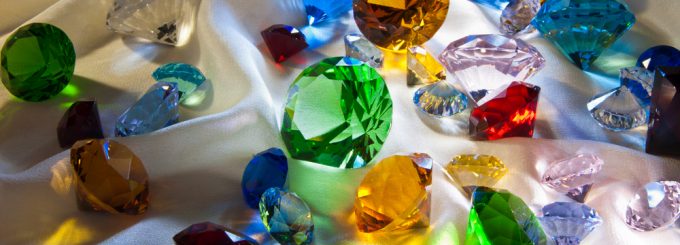Why Barion Cuts are Used in Jewelry

The Barion is one of the newest jewelry cuts, having been invented by Basil Watermeyer in 1971. It was first applied to South African diamonds but gem cutters quickly realized the advantages that could be gained when it was applied to other colored gemstones.
What is a Barion Cut?
A gem with a Barion cut displays a lunar shaped facet within its girdle. This results in a brilliant central portion since all its mains will meet at one point, while the break facets will meet at differing points. A fan facet set will typically be used to connect all the gem’s half lunar facets.
There are a number of advantages to this type of gem cut. First, it allows jewelers to handle deeper designs as well as longer lengths, without compromising brilliance. This is because the moon facet will function as the buffer, and will absorb varying facet sizes. When properly designed, Barion cuts will usually be much brighter than their conventional counterparts, particularly as their L/W ratio expands. Additionally, Barions will often provide higher yields, but will also need deeper customized settings.
The most ideal gem for a Barion cut is one which is lighter in color with a bigger sized rough. Because of its depth, Barions have a tendency to darken a gem’s finalized color. There are also greater facets than more traditional designs, which mean the Barion cut requires additional work with a bigger rough. When selecting the Barion cut, jewelers must avoid designs that need an elevated angle for moon facets. Anything above 68° degrees will result in a stone that is very challenging to set.
Barion Cut Characteristics
When using this cut the jeweler must slice their stone to the correct L/W. This means “length to width” and is used by cutters as a mathematical ratio which helps them ascertain the correct pattern that is needed for the cutting rough. It can also be utilized when fabricating new designs. One challenge that jewelers will run into when working with the Barion cut is when moon facets won’t properly align. As a result the stone will resemble a mountain peak, which typically means the L/W is off and must be corrected.
When should the Barion cut be used? It is ideal for situations where you want to maximize brilliance. However, you’ll also have to consider color enhancement, because a deeper cut will result in stronger coloration. Since the Barion is widely regarded as the deepest cut in the industry, gems that use it will display maximum color depth. This is outstanding for certain stones, as it will produce a much richer color which will boost its value; however for other stones it can be too much.
For instance, while the Barion cut works well with most diamonds, it is not recommended for garnets since these gems would wind up being too dark for their color to be appreciated. You want to apply this cut to gems which will maximize their brilliance while bringing out their color.


